
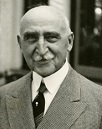


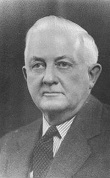

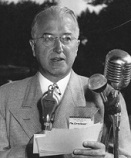
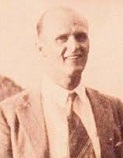










TLW's Candyscope™ (Candy Historyscope) |
By T.L. Winslow (TLW), the Historyscoper™ |
© Copyright by T.L. Winslow. All Rights Reserved. |
Original Pub. Date: Oct. 28, 2015. Last Update: Nov. 28, 2018. |
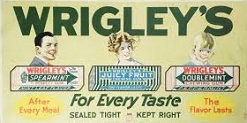

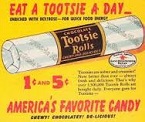
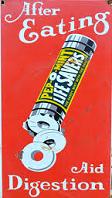
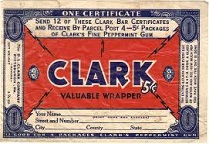
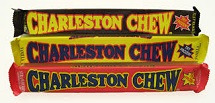

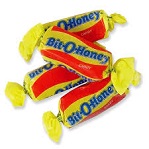
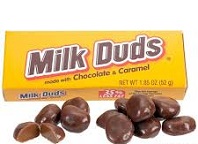
Westerners are not only known as history ignoramuses, but double dumbass history ignoramuses when it comes to candy and candy company and chocolate company history. Since I'm the one-and-only Historyscoper (tm), let me quickly bring you up to speed before you dive into my Master Historyscope.
About 1900 B.C.E. sees the first known drinking of chocolate (Nahuatl "xocolatl" = bitter water) beverages by the Mokaya ("corn people)") people in Mexico and Guatemala.
About 1100 B.C.E. the residents of the lower Ulua Valley in N Honduras are enjoying chocolate drinks, making it the Cradle of Chocolate.
In July 325 B.C.E. after his troops refuse to go further E, Alexander the Great halts on the banks of the Indus River and returns to Macedon through the Gedrosian Desert, where lack of supplies decimates his troops; Nearchus (Nearchos) of Crete returns with his fleet via the coast of the Indian Ocean and the Persian Gulf to the Euphrates River, reporting "a reed in India that brings forth honey without the help of bees", observing people growing sugar cane and making granulated sugar ("sarkara") (Lat. "saccarum") (Gk. "zakkhari"), causing Alexander's soldiers to carry some of the "honey-bearing reeds" home with them.
In the 5th cent. C.E. a method of turning sugar cane juice into sugar crystals (Sansk. "gravel", "sand") is discovered by the Gupta Empire in India; the crystals are called khanda ("gravel", "sand") (candy); Indian sailors carry knowledge of sugar on their trade routes, and Buddhist monks carry the knowledge to China, which sends a mission to India in 647 to learn the technology, and establishes its first sugar cane plantations in the 7th cent.; in the 8th cent. Arab traders introduce it from South Asia throughout the Abbasid Caliphate incl. Mesopotamia, the Mediterranean, Egypt, North Africa, and Analusia.
About 750 Muslims begin growing sugar cane in S Spain, causing the new confection of marzipan (almonds and sugar) to delight Christian palates.
In the 11th cent. the Crusades introduce new foodstuffs into the Euro diet, incl. the apricot, orange, shallot, and sugar ("sweet salt").
In the 12th cent. Arabs begin cultivating sugar cane in Sicily and Spain, causing it to become popular as an alternative to honey in Europe.
In 1420 sugar cane from Sicily is planted in the Madeira Islands after Portuguese navigator Joao Concalves Zarco (1390-1471) et al. discover it the year before; before the 1492 discovery of America by Christopher Columbus, sugar cane cuttings are given to him by Spanish Canary Islands gov. Beatriz de Bobadilla y Ossorio (1462-1501), which he takes with him to Hispaniola Island, which has its first harvest in 1501, after which cane sugar mills are built in the 1520s in Cuba and Jamaica, along with hundreds in Brazil by 1540, causing a great need for African slaves to work the sugar cane fields, which leads to the Triangle Trade with Africa and Europe in the late 16th to early 19th cents.

On May 11, 1502 after being returned to favor and getting an order last Sept. 3 to replace his enemy Francisco Bobadilla, Christopher Columbus (1451-1506) begins his Fourth Voyage (last), leaving Cadiz with four ships (Capitano, Vizcaino, Santiago de Palos, El Gallego) with instructions to discover the Malacca Straits and not engage in trade, carrying a 2-year supply of food and Arabic speakers, arriving in Hispaniola on June 29, along with new gov. (until 1509) Nicholas de Ovando (1460-1518) (a lares or cmdr., and member of the Military Order of Alcantara), future Incan Conquistador Francisco Pizarro Gonzalez (1471-1541), and future Dominican missionary Bartolome (Bartolomé) de las Casas (1484-1566), who accompanied him on his 3rd voyage in 1498, and starts out as a planter; Columbus arrests Bobbin' Bob and ships him to Spain, where he dies in a thrilla' of a shipwreck caused by a hurricane; Columbus goes on to discover Martinique (400 mi. NE of Venezuela), reaches Nicaragua on July 30, seizes a large native canoe containing cacao beans on Aug. 15, visits Costa Rica on Sept. 18, and lands in Portobelo (Porto Bello) (Sp. "Beautiful Port) in Panama on Nov. 2 and plants a colony; the Chibchan-speaking Cuna-Cuna (Cuna) (Kuna) (Guna) (San Blas) (Tule) Indians of Panama have several cases of hereditary albinism, causing legends of white Indians to arise; Ovando later becomes gov. of Santo Domingo, bringing 1.5K Spanish families to populate it and spread their seed into the new white Lebensraum, while instituting hyper-cruel genocidal measures against the West Indies aborigines, which reduce them from 500K in 1492 to 60K in 1507 - pardon me while I vomit?

In 1528 after conquering the Aztecs in 1519-21 and being heaped with honors, Spanish conquistador Hernan Cortes (Hernán Cortés) (1485-1547) returns to Spain, bringing chocolate from Montezuma's court back to the court of HRE Charles V in Spain in ships which use gold for ballast, where it is given to monks who hide it away for a cent. - the original Willy Wonka and the Chocolate Factory?
On July 7, 1550 Chocolate is introduced to Europe?
In 1662 the pope declares that religious fasts are not broken by consuming chocolate drinks, causing a huge increase in consumption throughout Europe.
Until the 18th century sugar is a luxury, reserved for the aristocracy, let them eat cake; by the 19th cent. it becomes so popular as to be considered a necessity.
In the 18th cent. Cordials (Lat. "cor" = heart) AKA surfeit waters, used for medicinal purposes begin to incl. alcohol, spawning griottes, long-stalked sour griotte cherries in kirsch wrapped in chocolate, invented in Franche-Comte, which travel to the U.S., evolving into chocolate-covered cherry cordials, which become popular for Valentines Day gifts.
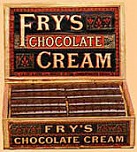
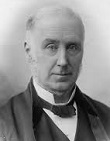
In 1761 J.S. Fry & Sons Ltd. is founded by Bristol-born English Quaker Joseph Fry (1728-87) and John Vaughan by the purchase of the chocolate business of Walter Churchman in Bristol; in 1795 Joseph Storrs Fry (1767-1835) gains control, patenting a method for grinding cocoa beans using a James Watt steam engine, introducing the first modern chocolate bar in 1847, followed in 1866 by Fry's Chocolate Cream Bar, the first chocolate Easter egg in the U.K. in 1873, and Fry's Turkish Delight in 1914; in 1919 it merges with Cadbury's under the name British Cocoa and Chocolate Co.
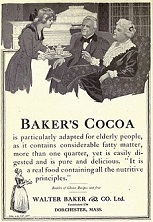


In 1764 Am. Baker's Chocolate Co. (originally Hannon's Best Chocolate) in Lower Mills, Dorchester, Mass. is founded by Am. physician James Baker and chocolatier John Hannon (-1779) to manufacture chocolate for making drinks, making consumers believe the chocolate is made for bakers too?; the business is carried on by James Baker's son Edmund Baker (1770-1846) and his son Col. Walter Baker (1792-1852), who institutes a money-back guarantee and trademarks the name Baker's; in 1849 they begin distribution in Calif.; in 1852 they introduce German's Sweet Chocolate, invented by employee Samuel German, which becomes a hit when the Dallas Morning Star pub. a recipe for German chocolate cake (originally German's Chocolate Cake) on June 3, 1957, adding more confusion to the names after co. owner Gen. Foods reprints the article under the misnomer; in 1883 they adopt the La Belle Chocolatiere logo, based on the painting Das Schokoladenmadchen (The Chocolate Girl) by Swiss artist Jean-Etienne Liotard (1702-89); in 1896 it is acquired by Forbes Syndicate, followed in 1927 by Postum Cereal Co. (Gen. Foods), followed in 1989 by Kraft Foods.
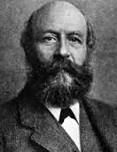
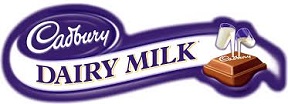
In 1824 Cadbury U.K. Ltd. confectionary co. is founded in Birmingham, England by Quaker John Cadbury (1802-89) and his brother Benjamin Cadbury (later his sons Richard and George) to sell tea, coffee, and drinking chocolate; George goes on to build the model teetotaler Bournville estate for workers; in 1854 Queen Victoria grants them a royal warant; in 1905 they introduce dairy milk chocolate, which has more milk than rival products, becoming their best selling product by 1914; in 1919 it merges with J.S. Fry & Sons, followed in 1969 by Schweppes, and in 2010 by Kraft Foods; in 1923 Cadbury Creme Eggs are introduced for Easter; it takes until 1971 to simulate a real egg with white and yolk; too bad, in 2016 Cadbury removes the word "Easter" from packaging; in 1978 Cadbury-Schweppes acquires Peter Paul for $58M; in 1988 the U.S. rights to the chocolate business are acquired by Hershey Co.; how convenient that chocolate is full of cadmium?
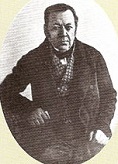
In 1836 Confiserie Sprungli (Sprüngli) (originally David Sprungli & Son) is founded in Zurich, Switzerland by David Sprungli-Schwarz (David Sprüngli-Schwarz) and his son Rudolf Sprungli-Ammann (Sprüngli-Ammann) to produce chocolates; in 1845 they move to the fashionable Paradeplatz; in 1892 Rudolf retires, and the business is split, with elder brother Johann Rudolf receiving the chocolate business under the name Chocolat Sprungli, and younger brother David Robert receiving the confectionery stores; in 1899 the Lindt chocolate factory in Bern is acquired for 1.5M gold francs, founding Lindt & Sprungli (Lindt & Sprüngli); in 1949 Lindt introduces the Lindor truffle ball; in 1952 it introduces the Lindt Gold Bunny hollow milk chocolate rabbit; in 1994 it acquires Austrian chocolate co. Hofbauer Osterreich, makers of the Kufferle (Küfferle) brand; in 1997 it acquires Caffarei of Italy, followed in 1998 by Ghirardelli of the U.S.

On July 14, 1845 gelatin-free Twizzlers brand licorice twists are introduced by Young and Smylie; in 1902 it merges with S.V. & F.P. Schudder and H.W. Petherbridge to form Nat Licorice Co., opening a plant in Montreal, Canada in 1908 and adopting the Twizzler brand name in 1929; in 1968 it is renamed Y&S Candies Inc.; in 1977 it is acquired by Hershey Co., who expands the line to cherry, strawberry, chocolate, and watermelon flavors, and experiments with shapes and sizes.
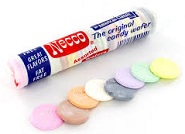
In 1847 Necco Wafers are introduced by English immigrant Oliver Chase, who in 1901 forms the New England Confectionary Co. (Necco); they are sold in rolls with eight flavors; during WWII the U.S. military orders them for rations.

On May 1, 1851 Queen Victoria inaugurates Prince Albert's Great London Exposition (Great Exhibition of the Works of Industry of All Nations) (Crystal Palace Exhibition) at the Crystal Palace in Hyde Park, London, showing off how Britain is 50 years ahead of the Continent in the Industrial Rev., with pavilions of "new techniques and new industries", introducing Americans and other yokel visitors to bonbons, chocolate creams, and hard candies, among many other modern marvels and wealth of this apotheosis of the British Empire at its height, incl. the mysterious Chinaman, and the Pigtail Organ, which ties the keys to pincers on the tails of swine selected for distinctive pitched squeals; German "cannon king" ironmaker Alfred Krupp (1812-87) exhibits a flawless solid cast steel ingot weighing over two tons, launching his internat. rep; the first America's Cup yacht race is held on a 60-mi. course around the Isle of Wight, and the U.S. yacht America defeats the English yacht Aurora, winning a cup worth $500 donated by the Royal Yacht Squadron of England, giving the race its name as the U.S. holds onto the cup against all challengers until 1983.

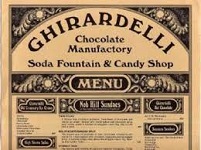
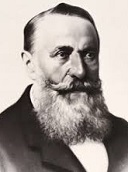
In June 1852 after opening his first store in Lima Peru in 1847, moving to Calif. during the Gold Rush, and losing his first two stores to fire last year, Italian-born Domenico "Domingo" Ghirardelli (1817-94) founds Ghirardelli Chocolate Co. in San Francisco, Calif. to produce high quality chocolates; in 1963 it is acquired by Golden Grain Macaroni Co., maker of Rice-A-Roni, which in 1966 is acquired by Quaker Oats; in 1998 it is acquired by Lindt and Sprungli of Switzerland; in 1965 Ghirardelli Square is declared a San Francisco landmark.
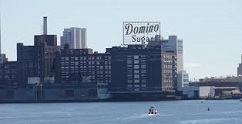
In 1856 the Domino Sugar Refinery in Williamsburg, Brooklyn, N.Y. is built; by 1870 it is refining 50%+ of the sugar in the U.S.; a new complex is built in 1882, becoming the largest sugar refinery on Earth.
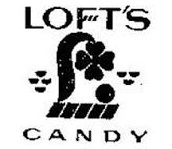

In 1860 Loft Inc. candy co. is founded in Lower Manhattan, N.Y. by London-born English immigrant William Loft (1828-1919), who hands his business to his eldest son George William Loft (1865-1943) in the 1890s, who expands the business and builds a factory in Long Island City, N.Y., going on to become the world's largest candymaker in the 1920s; in June 1941 it merges with PepsiCo, which spins-off the Loft Candy Corp.
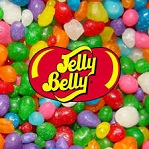
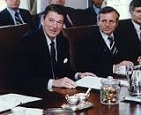
In 1861 William Schrafft of Boston, Mass. first mentions Jelly Beans, urging people to send them to U.S. Civil War soldiers; In 1869 Jelly Belly Candy Co. is founded in Belleville, Ill. by German immigrant Gustav Goelitz to manufacture gourmet jelly beans; in 1924 2nd gen. owner Herman Goelitz moves the co. to Oakland, Calif.; in 1966 Calif. Repub. Gov. Ronald Reagan begins eating them to help in quitting smoking. On July 5, 1905 the Chicago Daily News pub. the first advertisement for bulk jelly beans (9 cents/lb.); in the 1930s they become linked to Easter celebrations in the U.S.; in Jan. 1980 new U.S. pres. Ronald Reagan places a standing order for 720 1-lb. bags of Jelly Belly brand jelly beans (306,070 beans) each month, costing $2,880, later uttering the soundbyte: "You can tell a lot about a fellow's character by his way of eating jelly beans."
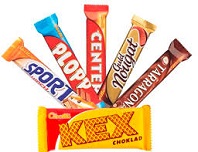
In 1862 Cloetta confectionary and nut co. is founded in Copenhagen, Denmark by Swiss brothers Bernhard, Christopher, and Nutin Cloetta, opening a factory in 1873 in Malmo, Sweden, which in 1901 moves to Ljungsbro; in 1917 it is acquired by the Swedish Chocolate Factory; in 2012 it merges with much larger Leaf Brands under the Cloetta name.
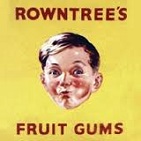
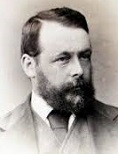

In 1862 H.I. Rowntree's confectionary business in Castlegate, York, England is founded by English Quaker Henry Isaac Rowntree (1837-83), who buys out the Tuke family, then in 1869 adds his brother Joseph Rowntree (1836-1925), growing to 4K employees by 1900; in 1881 it introduces Rowntree's Fruit Pastilles, followed by Rowntree's Fruit Gums (1893), Aero Bars (1935), Kit Kat (1935), Smarties (1937), Polo (1948) (from the polar taste of the mint), and After Eight Mint Chocolate Thins (1962); in 1969 it merges with John Mackintosh & Co., makers of Rolo, Munchies, Carmac, and Quality Street to become Rowntree Mackintosh; in 1971 it acquires Menier Chocolate of france; in 1976 it introduces the Yorkie Bar, followed by the Lion Bar (Big Cat) (1977); in 1978 Hershey acquires the U.S. rights to Kit Kat and Rolo; in 1988 after it becomes the 4th largest chocolate manufacturer on Earth after Mars, Hershey, and Cadbury it is acquired by Nestle for Ł2.55B.
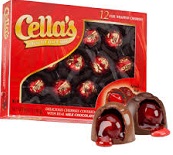
In 1864 Cella's brand chocolate-covered cherry cordial confections are introduced; in 1985 it is acquired by Tootsie Roll Industries.
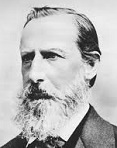

In 1867 German chemist Justus von Liebig (1803-73) invents the first commercial infant formula; meanwhile in Sept. 1866 after emigrating to Switzerland in 1834-9 and starting out as a pharmacist, switching to production of rapeseed and nut oils for lamps, alcoholic spirits, vinegar, carbonated mineral water, lemonade, gas lighting, fertilizers, and icemakers, Frankfurt am Main, German-born Henri (Heinrich) Nestle (Nestlé) (Ger. "small bird's nest") (1814-90) copies, er, develops his own version, which is a success, selling his Farine Lactee Henri Nestle co. (founded 1866) in 1875; in 1879 Nestle merges with milk chocolate inventor Daniel Peter; in 1904 Nestle begins marketing Swiss chocolate; in 1905 Nestle (Nestlé) S.A. (originally Nestle and Anglo-Swiss Condensed Milk Co., then Nestle Alimentana SA in 1947-77) is formed from the merger of Nestle with the Anglo-Swiss Milk Co. (founded 1866), introducing Nescafe (Nescafé) brand instant coffee on Apr. 1, 1938, which becomes a hit with the U.S. military in WWII, then acquiring Maggi (1974), Cross & Blackwell (1950), Findus (1963), Libby's (1971), Stouffer's (1973), L'Oreal (1974), Alcon Labs (1977), Carnation (1984), Rowntree Mackintosh (1988), San Pellegrino (1997), and Spillers Petfoods (1998); by the end of the 20th cent. it's the world's largest food co., going on to acquire Ralston Purina (2002), Dreyer's (June 2002), Chef America (Aug. 2002) et al.

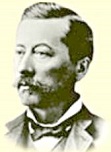
In 1868 Guittard Chocolate Co. is founded in San Francisco, Calif. by failed French-born Calif. Gold Rush prospector Etienne Guittard (1838-99), who passes the business to his son Horace C. Guittard; in 1954 they move to Burlingame, Calif.; the co. specializes in couverture (high cocoa butter) chocolate.
In 1870 German-immigrant-packed Chicago, Ill. has 17 candy manufacturers, growing to 65 in 1900, becoming the Candy Capital of the U.S. after candy consumption zooms from 2.2 lbs./person in 1880 to 5.6 lbs/person in 1914, and 13.1 lbs./person in 1919.


In 1872 English sugar refiner Sir Henry Tate (1819-99) purchases a patent on sugar cube manufacture from Eugen Langen (1833-95) of Germany, building a refinery in Liverpool this year, followed by another in Silvertown, London in 1877, relying on the English sweet tooth and becoming a millionaire philanthropist.
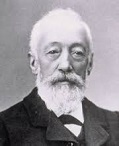
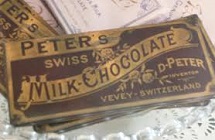
In 1875 Daniel Peter (1836-1919) of Vevey, Switzerland invents Milk Chocolate by adding powdered milk, founding a co. to market Peter's Swiss Milk Chocolate that in 1879 merges with neighbor Henri Nestlé (Nestle).
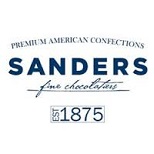
On June 17, 1875 after his first shop was destroyed in the Great Chicago Fire of 1871, Sanders Chocolates is founded in Detroit, Mich. by German immigrant Frederick Sanders Schmidt, allegedly inventing the ice cream soda for customers in summer 1876; in 1891 he opens the Pavilion of Sweets, with a red-white awning and tower resembling a Muslim mosque, going on to specialize in hot fudge and caramel toppings for ice cream, along with the Hot Fudge Cream Puff and the Bumpy Cake (1912) (devil's food cake with rows of buttercream on top, covered in chocolate ganache); Henry Ford works for them for a time as a mechanic.
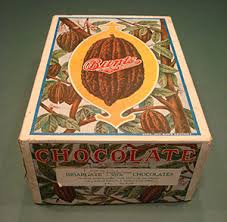
In 1876 the Bunte Brothers Candy Co. of Chicago, Ill. is founded by brothers Ferdinand Bunte and Gustav Bunte, along with Charles Spoehr, later Ferdinand's son Theodore; in 1914 they introduce the marshmallow-maple Tango, becoming the first chocolate-covered candy bar, becoming known for hard candies with soft fillings; by 1912 1.2K employees generate $2.4M annual sales; the co. goes on to launch the careers of candymakers George Williamson (Oh Henry!), J.R. Holloway (Milk Duds), and Emil Julius Brach (Brach's Candy); in 1957 they build a new factory on a 14-acre lot at Franklin and Holman Aves. in West Side, Chicago; their old parking lot is turned into a hospital and demolished for the 2008 film "The Dark Knight"; in 1954 it is acquired by Chase Candy Co., makers of Cherry Mash.
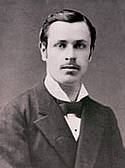
In Dec. 1879 Rodolphe (Rudolf) Lindt (1855-1909) of Berne, Switzerland invents the Conching Machine, which improves chocolate consistency and aroma, founding a chocolate factory in the Matttequartier on the Aare River; in 1899 he sells-out to Chocolate Sprungli AG for 1.5M gold francs, forming Lindt & Sprungli.
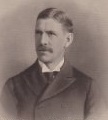
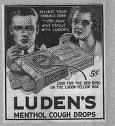
In 1879 William Henry Luden (1859-1949) of Reading, Penn. begins selling confections, incl. brown sugar-molasses Moshies, and amber-colored menthol Luden's Cough Drops; in 1928 Luden's is acquired by Food Industries of Philadelphia, which in 1980 acquires Queen Anne Candy Co. of Hammond, Inc. before selling-out in 1986 to Hershey Co., which sells Luden's to Pharmacia in 2001, which in 2003 is acquired by Pfizer, which sells its consumer products div. in 2006 to Johnson & Johnson; the slogan is "Trusted Luden's Care - Everyone needs a little TLC".
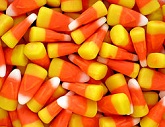
In the 1880s George Renninger (1815-91) of Wunderle Candy Co. in Philadelphia, Penn. invents tri-colored (yellow at the wide end, orange in the middle, white at the tip) Candy Corn (Kandy Korn) (originally Chicken Feed) for sale during the Halloween season; in 1898 the Goelitz (later Jelly Belly) Candy Co. begins manufacturing them; the Indian Corn (chocolate brown at the wide end) variety also becomes popular; farmers love its agrarian look?

In the 1880s Salt Water Taffy is invented by "Salt Water Taffy King" Joseph F. Fralinger (1848-1927) of Atlantic City, N.J., who entertains Boardwalk strollers by pulling it on a hook, then selling 5-cent bags; his recipe is refined by Enoch James, who mechanizes the pulling process; on Aug. 21, 1923 John Edmiston obtains a trademark (#172,016) for salt water taffy, which is invalidated in 1925.
In 1884 the Nat. Confectioners Assoc. is founded in Chicago, Ill. by 69 candy firms, growing to 700 members by modern times, sponsoring the annual All Candy Expo at the McCormick Place Convention Center (Sweets & Snacks Expo in 2010); in 2008 it merges with the Chocolate Manufacturers Assoc. of the USA (Chocolate Council).
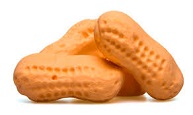
In the late 1800s Circus Peanuts peanut-shaped marshmallow candies are first marketed in the U.S.; in 1963 Gen. Mills vice-pres. John Holahan discovers that Circus Peanut shavings enhance their Lucky Charms brand breakfast cereal, making it the first breakfast cereal containing marshmallow bits (marbits).

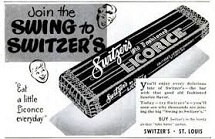
In the 1890s Frederick Michael Switzer (1865-1949), founds Switzer's Candy Co. in St. Louis, Mo., starting out selling Buttermels, Chocolate Soldiers, and Yellow Jackets, and switching to 5-cent licorice twists after the 1904 St. Louis World's Fair.


On Apr. 1, 1891 Philly-born William Wrigley Jr. (1861-1932) founds the William Wrigley Jr. Co. in Chicago, Ill. to sell soap and baking powder, offering free chewing gum with each can, which proves more popular than the baking power, going on to specialize in chewing gum next year and become #1; in 2005 it purchases Life Savers and Altoids from Kraft Foods for $1.5B; on Jan. 23, 2007 it acquires 80% of A. Korkunov for $300M; on Apr. 23, 2008 Mars Co. acquires it for $23B.

In 1893 Good & Plenty pink-white sweet black licorice coated hard candy is introduced by Quaker City Confectionary Co. in Philly, becoming the oldest branded candy in the U.S.; in 1973 it is acquired by Warner-Lambert, followed in 1982 by Leaf Candy Co., which is acquired in 1996 by Hershey Foods; K-Carmine dye, produced from the crushed bodies of the female cochineal insect is used for the pink candies.





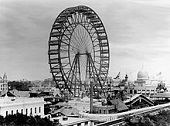

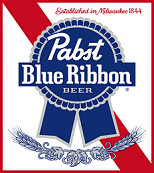
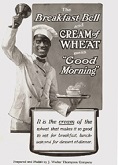
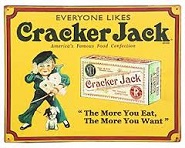
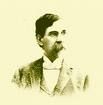
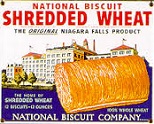




Food is Love, or the Devil in the White City? The 20th Century begins ahead of schedule in the greatest World's Fair of All Time? On May 1, 1893 Pres. Cleveland presses a golden telegraph key in front of a crowd of 300K (largest so far in U.S. history) to start the giant Westinghouse electrical generators lighting 120K lightbulbs and open the $27M World's Columbian Expedition (Chicago World's Fair) (closes Nov. 1) in the "White City" of 150 neoclassic bldgs. in Jackson Park, 686 acres of reclaimed swamp along the shore of Lake Michigan 7 mi. S of downtown Chicago (built of plaster-cement-fiber staff on flammable wooden-steel frames, not marble, and painted using newfangled spray-painting equipment), designed by Daniel H. Burnham and John Wellborn Root (1850-91) (who dies trying to meet the crushing time constraints); on May 12 the South Side Elevated Railroad reaches Jackson Park to provide service to the fair, becoming the first "el", based on the nickname "alley L"; Frank Lloyd Wright (b. 1867) quits college to work for Burnham, who first sends him to the Beaux Arts in Paris, and he comes back saying that the Columbian Exposition set U.S. architecture back 50 years; Francis Bellamy's new "Pledge of Allegiance" is recited by children at the fair's dedication; the Exposition orchestra, conducted by Theodore Thomas (1835-1905) features violinist Maud Powell (1867-1920), who proves that woman can work in them newfangled orchestra thingies; the Court of Honor features the magnificent Peristyle by Charles Atwood, Daniel French's 65-ft.-tall statue The Republic, as well as colossal heads of artists Michelangelo et al. by French-born Beaux Arts popularizer Olin Levi Warner (1844-96) in the Palace of Fine Arts, which houses 10K pieces of art so crowded together that nobody can view them all; the 1687 ft. x 787 ft. x 245 ft. tall (500K sq. ft.) (44 acre) Manufacturers and Liberal Arts Bldg. (opened in Oct. 1892 in front of a crowd of 100K), the largest bldg. in the world, has a crowd cap. of 300K and is lit with 10K electric lights, and the endless exhibits are worth at least $50M; the U.S. Liberty Bell is displayed in the Penn. exhibit in a replica of Independence Hall; the Japanese Village is the first exposure of Americans to cool Japanese culture, and is the only non-white exhibition not snickered at; the Cold Storage Bldg. features an indoor skating rink, and burns down on July 10 with the loss of 13 firemen and four workers, who climb to the top of the metal tower then burn alive or jump while the crowds watch; the polychrome pro-Modern Transportation Bldg. is designed by Louis Henri Sullivan; the Women's Bldg., designed by 21-y.-o. Am. architect Sophia Hayden Bennett (1868-1953) (first female in the U.S. with an architecture degree) features exclusively work by women (too bad, welcome to reality, Hayden is only paid $1K for her design, 10% of what men earn); the first-ever (264 ft., 1.2K ton) Ferris Wheel, built by George Washington Gale Ferris Jr. (1859-96) (36 salon cars, each holding 40-60 passengers, with five glass panels) is the highlight and the financial salvation of the fair, and is set up at the 1904 St. Louis World's Fair then scrapped; an all-electric kitchen is featured; the Captive Balloon costs $2 for a ride to 1,490 ft. plus a photo, and it crashes in high winds and goes out of biz; the Shedd Aquarium Bldg., the largest indoor aquarium in the world causes an awakening of the environmental movement; the Midway Plaisance of future U.S. congressman (Jewish) Sol Bloom "the Music Man" (1870-1949), designed by Frederick Law Olmsted is the big moneymaker, filled with booze, cigars and bawdy entertainment, incl. the Streets of Cairo ("Beautiful Orient") Bldg., complete with a replica of the Sphinx, featuring Little Egypt (Farida Mazar Spyropoulos) and the "Naughty Girls from Algeria", who dance the Hootchy-Kootchy (Hoochie-Koochie) (Kouta-Kouta), AKA the "danse du ventre" (belly dance) (named by Bloom), with the first perf. of Bloom's uncopyrighted Snake Charmer Tune ("Oh they don't wear pants on the sunny side of France"), which pisses-off Head Prude Anthony Comstock into trying to shut it down, which only makes it more popular and causes the dance to spread around the U.S., complete with a better 1895 version of the song The Streets of Cairo, or The Poor Little Country Maid, by James Thornton (1861-1938), who uses his wife Bonnie to demonstrate it; the U. of Chicago is later built on the site of the Midway Plaisance, and the Chicago Bears football team becomes known as "the monsters of the Midway"; Boilerplate the Mechanical Marvel, a mechanical robot is another don't-miss; the fair introduces the word "cafeteria"; the Rumford Kitchen of home economics founder Ellen Henrietta Swallow Richards (1842-1911) showcases food science, incl. luncheon menus with nutritional info.; chili con carne is introduced; Joseph Garis Cochrane displays her new automatic dishwater (patented 1886); carmel maker Milton S. Hershey sees chocolate-making machinery at the fair and buys it; Henry Perky's shredded wheat is popularized, along with Wrigley's new Juicy Fruit brand chewing gum; German-born Frederick William "Fritz" Rueckheim and his brother Louis Rueckheim introduce Cracker Jack brand caramel-coated popcorn with peanuts (registered in 1896, which comes in a "wax-sealed" packages in 1899, gets a boost from the 1908 song "Take Me Out to the Ball Game" by Albert Von Tilzer and Jack Norworth, and begins incl. silly trivial toys as prizes starting in 1912, then features Sailor Jack and his dog Bingo in 1918, with the slogan "The more you eat the more you want"); they actually don't introduce it until 1896?; Pabst Blue Ribbon Beer, made by Capt. Frederick Pabst (1836-1904) (since 1882, when he started tying silk ribbons to his Select Beer) wins a blue ribbon, and guess what, 30M ft. of silk blue ribbon shipped with the beer that made Milwaukee famous by the turn of the cent.?; Cream of Wheat farina breakfast porridge mix made from wheat semolina makes its debut; Bavarian sausage vendor Anton Ludwig Feuchtwanger starts out providing white gloves to eat them with, then switches to rolls when they keep the gloves as souvenirs; Henry John "H.J." Heinz (1844-1919) attracts people to his 2nd-floor out-of-the way booth by handing out Heinz pickle pins, going on to give away 100M of them during the next cent.; R.T. Davis Mill Co. hires Ky.-born former slave Nancy Green (1834-1923) to demonstrate Aunt Jemima pancake mix in front of their 24-ft.-high 12-ft.-diam. world's largest flour barrel, causing co. sales to go through the roof; writer L. Frank Baum later models his Emerald City after the White City; "Devil in the White City" serial killer Dr. Henry Howard Holmes (Herman Webster Mudgett) (1861-96) ("the Torture Doctor") sobers it up with some World's Fair murders after he builds a 105-room hotel nearby filled with torture chambers, and lures 27+ young women to their deaths, torturing and gassing them in a soundproof room, then butchering their bodies in the basement and selling the parts to medical schools; the fair closes on Nov. 1 after hosting 27M visitors from 73 nations, and makes a small profit; on the night of Oct. 28 disgruntled insane newspaper distributor Patrick Eugene Joseph Prendergast (1868-94) (who thought that he was owed a govt. job for supporting his election campaign) murders Chicago mayor Carter Henry Harrison Sr. (b. 1825) in his home with a small revolver, causing many to skip the closing ceremonies for his Nov. 1 funeral; Prendergast is hanged next July 13 after his atty. Clarence Darrow unsuccessfully raises the insanity defense - he didn't get the job, did he?
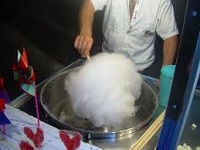
In 1897 a machine for spinning Cotton candy is invented by dentist William James Morrison (1860-1926) in Nashville, Tenn. and confectioner John C. Wharton, who introduces it at the 1904 St. Louis World's Fair under the name Fairy Floss, selling 68,655 boxes at 25 cents each. In 1900 Thomas Patton receives a patent for the Cotton Candy (spun sugar) machine, which is first used at the Ringling Bros. Circus; meanwhile the city of New Orleans, La. claims that dentist Josef Delarose Lascaux invented it; none of the machines work well until Gold Medal Products introduces a spring base model in 1949.
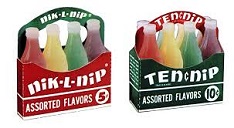
In 1899 Am. Candy Co. is founded in Selma, Ala., going on to make Nik-L-Nips (soda bottle-shaped wax tubes filled with fruit-flavored liquid), Fun Gum Sugar Lips (wax lips), Magic Sticks (wax sticks filled with fruit-flavored liquid) et al.; in 1989 they are acquired by the Pinkerton Group, which is acquired in 2002 by Concord Confections (makers of Dubble Bubble), which becomes part of Tootsie Roll Industries.



In 1900 after selling his Lancaster Caramel Co. for $1M to switch to chocolate manufacturing, with the soundbyte "Caramels are just a fad, but chocolate is a permanent thing", Milton Snavely Hershey (1857-1945) of Derry Church, Penn. begins cranking out the ever-popular 5-cent Hershey's Milk Chocolate Bar (Hershey Bar), "the Great American Chocolate Bar", based on the Hershey Process (1899) that makes use of fresh milk before it can spoil; the package features gold and red lettering on a white background, with the legend "A Nutritious Confection", and comes with a free postcard depicting Lancaster, Penn.; a variety with almonds is introduced in 1908. In 1903 Hershey begins building a plant in his hometown of Derry Church, Penn. (14 mi. E of Harrisburg), which later becomes Hershey, Penn. (AKA Chocolatetown USA), "the Sweetest Place on Earth". In 1907 to compete with Wilbur Buds from Lititz, Penn., Hershey Co. begins producing the Hershey's Kiss (named after the sound and motion made by the machine depositing the chocolate), introducing a wrapping maching in 1921, allowing a small paper ribbon to be added to each kiss. They follow with Mr. Goodbar (1925), Hershey's Chocolate Syrup (1926), Hershey's Semi-Sweet Chocolate Chips (1928), Hershey's Krackel Bar (1938), and Symphony (1989).
In the early 20th cent. candy cigarettes are introduced, allowing kids to play-act and get a sweet treat at the same time; too bad, they end up getting banned by several countries.

In 1901 the Idaho Candy Co. is founded in Boise, Idaho by Thomas Ovard "T.O." Smith (1876-1954) in his garage, selling door-to-door until he can open a factory in 1909, going on to make the Idaho Spud Bar (1918) ("the Candy Bar That Makes Idaho Famous"), Old Faithful Bar (1925), Cherry Cocktail Bar (1926), Owyhee Butter Toffee et al.; in 1991 it is acquired by John Wagers, whose son Dave Wagers takes over in 1991.
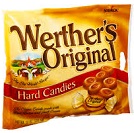
In 1903 Werther's Original (Werthers Echte) caramel-flavored hard candy is introduced by August Storck KG of Werther, Westphalia, Germany; in the 1990s it is marketed as Werther's Original.

In fall 1904 after losing his shirt investing in the Dreibus-Heim Candy Co., German immigrant Emil Julius Brach (1859-1947) founds Brach's Confections (E.J. Brach Corp.) (originally Brach's Palace of Sweets) in North Side Chicago, Ill. with $1K, undercutting competitors and moving to West Side Chicago in May 1906, going wholesale-only and growing to 50K lbs./week by 1911, and four factories by 1923 producing 127 different candy varieties at 2.225M lbs/week; in 1948 an electrical spark causes an explosion that kills 11 employees and injures 18, and after it is rebuilt it becomes the largest candy manufacturing plant on Earth (2.2M sq. ft.), with 2.4K workers producing 4M lbs./year ($10M/year); in 1958 they introduce the Pick-A-Mix option at grocery stores; in 1966 it is acquired by Am. Home Products; in 1980 its 3.5K workers produce 250M lbs./year; in 1987 it is acquired by Jacobs Suchard Ltd. of Switzerland for $730M, who drive it into the ground by changing the name and product line; in 1990 Philip Morris acquires Jacobs Suck, er, Suchard for $3.8B, splitting Brach off, which in Sept. 1994 acquires the Brock Candy Co. of Chattanooga, Tenn. for $140M; too bad, in 2003 Brach-Brock is acquired by Barry Callebaut AG, and production is moved to Mexico; in 2007 it is acquired by Farley's & Sathers Candy Co., which in 2012 merges with the Ferrara Pan Candy Co. to form the Ferrara Candy Co., becoming the largest manufacturer of bulk candy in the U.S.
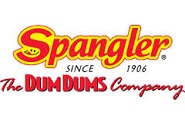
On Aug. 20, 1906 Spangler Candy Co. in Bryan, Ohio is founded by Arthur G. Spangler (-1945) by the purchase of Gold Leaf Baking Co., producing baking soda and powder; in 1911 it introduces its first candy, the Spangler Cocoanut Ball, followed by hard and stick candy in 1922, going on to introduce Marshmallow Circus Peanuts (1940), Marshmallow Topping (1941) et al. before acquiring Dum Dums lollipops from Akron Candy Co. in 1953, turning Bryan, Ohio into "the Dum Dum Capitol of the World", acquiring A-Z Christmas Candy Cane Co. in 1954, Ohio Confections Fudge (makers of Pecan Divinity) in 1957, Shelby Bubble Gum in 1962, Am. Mint Corp. in 1965, Saf-T-Pops in 1978, Astro Pops in 1987, and Suck an Egg brand in 1995, going on to produce 45% of the candy canes in the U.S.

In 1907 Joyva confectionary co. is founded in Brooklyn, N.Y. by Russian immigrant Nathan Radutzky to manufacture kosher sesame-based halvah, becoming a hit with kosher delis and stores.
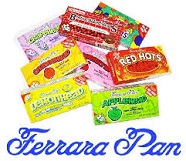
In 1908 Ferrara Candy Co. (originally Ferrara Pan Candy Co.) is founded in Little Italy, Chicago, Ill. by Nola, Italy-born Salvatore Ferrara as a bakery, switching to sugar-coated almonds (confetti) before partnering in 1919 with brothers-in-law Salvatore Buffardi and Anello Pagano and switching to multiple candies, growing to the #1 U.S. producer of conversation hearts and mallowcremes, and a leading producer of jellybeans; its line incl. the original jawbreaker (Jawbuster) (1919), Atomic Fireballs, Boston Baked Beans, Lemonheads (1962) (named after Salvatore Ferrara II, who was born by forceps), Red Hots, Fruit Stripes, Super Bubble, Jujyfruits et al.; in 2012 it merges with Farley & Sathers.

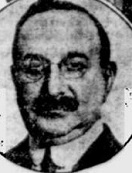
In 1908 after inventing Bromangelon Jelly Powder, followed by a machine to give it its unique texture, Laupheim, Tubingen, Baden-Wurttemberg, Germany-born immigrant (1884) Leo Leopold Hirschfeld (1867-1922), employee of the Stern & Staalberg candy co. in Manhattan, N.Y., owned by Julius Stern and Jacob Saalberg invents Tootsie Rolls, named after his 5-y.-o. daughter Clara, becoming the first individually-wrapped penny candy in the U.S., using a heat-safe chocolate that is used in WWII rations, causing them to become a nickname for bullets; in 1917 it becomes the Sweets Co. of Am.; too bad, in 1920 after rising to vice-pres. Hirshfield is fired, and ends up shooting himself on Jan. 13, 1922 in his room at the Monterey Hotel in Manhattan, leaving the note: "I'm sorry, but I couldn't help it"; in 1935 after changing the name to the Sweets Co. of Am. in 1917 it is acquired by Bernard D. Rubin (1893-1948) of Brooklyn, N.Y., who made their paper boxes, moving the manufacturing plant to Hoboken, N.J; in 1931 Tootsie Pops are introduced, becoming popular during the Depression; in 1966 it changes its name to Tootsie Roll Industries; by 2015 it makes 83M Tootsie Rolls daily, incorporating the previous day's batch in each day's batch, so that theoretically "there's a bit of Leo's very first Tootsie Roll in every one of the eighty three million Tootsie Rolls that Tootsie produces each day."
In 1908 George Smith of the Bradley Smith Co. of New Haven, Conn. (co-owned by Andrew Bradley) begins marketing 1-cent Lolly Pops, named after his favorite local racehorse, and inspired by a chocolate carmel taffy on a stick marketed by Reynolds Taffy of West Haven, Conn.; on Oct. 13, 1931 after a long battle he finally trademarks the name Lolly Pop, which becomes moot when the public goes with the generic term lollipop.

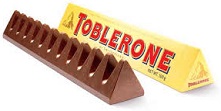
In 1908 Theodor Tobler (1876-1941) of Switzerland begins marketing Toblerone brand prism-shaped chocolate candies (which look like the Matterhorn); it is acquired by Kraft in 1990.
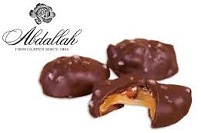
In 1909 Abdallah Candies (originally Calhoun Candy Depot until 1916) is founded in Minneapolis, Minn. by Lebanese immigrant Albert Abdallah and his Swedish-descent wife Helen Trovall, going on to operate for four generations (until ?).
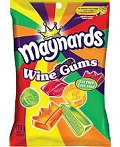
In 1909 chewy alcohol-free wine gum candies are introduced by Charles Gordon Maynard of Maynard's Sweets in Stamford Hill, London, England (founded 1896).
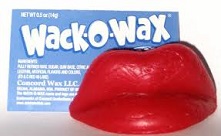
In 1912 J.W. Glenn Co. of Buffalo, N.Y. is inherited from English immigrant candymaker John W. Glenn by his son John Glenn, who goes on to introduce "penny chewing gum novelties" made of food-grade paraffin, incl. wax lips and horse teeth, growing to 100 employees and 18 salesmen by 1923.


In 1912 Life Savers (originally Crane's Pep-O-Mint Life Savers) brand ring-shaped candy, "the candy mint with the hole" (made with a pill-making machine and a hole puncher) begins to be marketed in the U.S. by chocolate manufacturer Clarence A. Crane (1872-1931) of Garrettsville (near Cleveland), Ohio as a summer candy that doesn't melt, with the slogan "For that stormy breath", and a picture on the cardboard tube showing a sailor tossing a young woman a life preserver; in 1913 he sells the rights to Edward John Noble (1882-1958) for $2.9K, who changes to tin-foil wrappers, founding the Life Savers Candy Co. and placing them next to cash registers in stores and restaurants, with the cashiers instructed to always give customers a nickel in change for their dime; the 5-flavor roll is introduced in 1935.
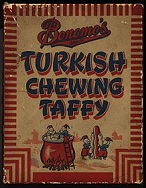
In 1912 Austrian immigrant Herman Herer invents Turkish Taffy, becoming the first (only?) flat taffy on the market, selling it to M. Schwarz and Sons, which in 1936 is acquired by the Bonomo Co. of Coney Island, N.Y., founded by Turkish Sephardic Jewish immigrant Albert J. Bonomo, who modify the formula to make it more Turkish, a non-Newtonian fluid that must be broken before eaten, with the slogan: "Crack it up - Hold bar in palm of hand - strike against flat surface - let it melt in your mouth", starting out selling it in large sheets to Woolworth's stores, who use a ball-peen hammer to break it up and sell it by the pound before a a 5-cent candy bar size is introduced in the late 1940s; in 1980 it is acquired by Tootsie Roll Industries, who run it into the ground, discontinuing it in 1989; it is reintroduced in 2010.
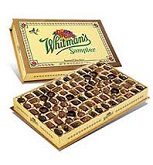
In 1912 Whitman's Sampler is introduced by Whitman's Candies of Philly (founded 1842) becoming the first candy box to use cellophane wrapping; in the early 1960s Whitman's is acquired by Pet Inc., which in 1993 sells it to Russell Stover, which in July 2014 is acquired by Lindt & Sprungli; too bad, in 1941 NAACP atty. Thurgood Marshall objects to the use of Pickaninny Peppermints, causing the co. to deny racism but drop them from their line.
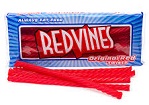
In 1914 Am. Licorice Co. is founded in Chicago, Ill., opening a manufacturing plant in San Francisco, Calif. in 1925 and producing a set of licorice shoes for Charlie Chaplin's film "The Gold Rush"; in 1971 it relocates to Union City, Calif.; it goes on to introduce Red Vines, Sour Punch straws et al.

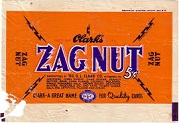
In 1917 the Clark Bar milk chocolate peanut butter bar is invented by Irish-born David Lytle Clark (1864-1939) of Allegheny (near Pittsburgh), Penn., 1886 founder of the D.L. Clark Co., which in 1930 introduces the chocolate-free coconut-peanut Zagnut bar; in 1955 it is acquired by Beatrice Foods, followed in 1983 by the Leaf Candy Co. before being split off in 1996 then acquired by Necco in 1999.
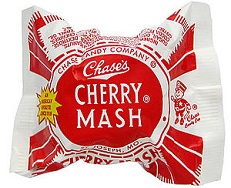
In 1918 the Cherry Mash (originally Cherry Chase or Chaser) candy bar, with a marashino cherry center covered in chopped roasted peanuts and chocolate is invented by Ernest Chase, son of Dr. George Washington Chase of St. Joseph, Mo., who went into the candy business in 1876; the mascot is the Candy Cop; in 1944 it is acquired by F.S. Yantis & Co. of Chicago, Ill., becoming the best-selling cherry candy bar in the U.S.; in 1954 it acquires Bunte Brothers Candy Co. of Chicago, Ill.

In 1918 Turtles brand chocolate caramel peanut candies are introduced by Johnson's Candy Co., which in 1923 is renamed DeMet's Candy Co.

In 1919 Bob's (Bobs) Candies is founded in Albana, Ga. by Bob McCormack, becoming the first to wrap candy in cellophane; in 1952 they invent a machine for twisting and cutting stick candy; in 1953 they invent the Keller Machine to bend candy canes, becoming the largest manufacturer; in 2005 it is acquired by Farley & Sathers Candy Co., which merges in 2012 with Ferrara Pan Candy Co. to form Ferrara Candy Co.
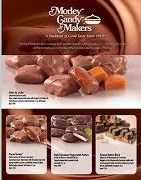
In 1919 Morley Candy Co. is founded in Clinton Township, Mich. to produce assorted chocolates and peanut butter blocks; in 2002 it acquires Sanders Chocolates.

In 1919 Phoenix Candy Co. is founded in Bush Terminal, Brooklyn, N.Y. by Charles Cari to manufacture salt water taffy; in 1953 it is acquired by father-son team Harry and Joseph Klein, who introduce the Now and Later taffy bars, adding several candy-and-a-toy products in the 1960s-1970s; in 1992 it is acquired by Nabisco, followed in 2000 by Farley's & Sanders Candy Co., which in 2012 merges with Ferrara Pan Candy to form Ferrara Candy Co.
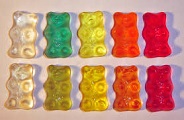
In 1920 Johannes "Hans" Riegel Sr. (1893-1945) founds the Haribo Co. in Bonn, Germany to manufacture Gummy Bears, introducing the Dancing Bear (Tanzbar) in 1922, followed by the Gold Bear (Goldbar), expanding sales worldwide.

In 1920 the Oh Henry! candy bar, consisting of peanuts, carmel, and fudge coated in chocolate is introduced by the Williamson Candy Co. of Chicago, Ill., allegedly named after Am. writer O. Henry, or a boy who liked to flirt with girls, but really invented last year by Tom Henry of Arkansas City, Kan., who sold-out; in 1994 it is acquired by Nestle.

In 1920 the ZERO (originally Double Zero, as in cool) candy bar, made of caramel, peanut, and almond nougat covered with white chocolate fudge is introduced by Hollywood Candy Co. (Brands) of Hollywood, Minn. (founded 1912), who build a factory in Centralia, Ill.; in 1967 they are acquired to Consolidated Foods Corp. (Sara Lee), followed in 1988 by Leaf Inc., which in 1996 is acquired by Hershey Foods Corp.
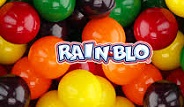
In the 1920s Leaf Confectionary Co. is founded in Chicago, Ill. by Sol S. Leaf, introducing Rainblo Bubble Gum in 1940; in 1947 it merges with Overland Candy Co., Leaf Machinery, and Chicago Biscuit Co. to form Leaf Brands, issuing the first post-WWII color baseball cards in 1948; in 1949 it reintroduces Whoppers Malted Milk Balls, which is sold in 1960 to W.R. Grace and Co., who sells it back in 1976; in 1983 Leaf acquires Jolly Rancher before being acquired by the conglomerate Huhtamaki (Huhtamäki) Oyj of Helsinki, Finland (founded 1920), who merges it with Phoenix Candy and Irving, Tex.-based Donruss trading card div. of Gen. Mills (founded 1954); in 1986 Phoenix Candy is sold to Kouri Capital of Finland, which becomes Phoenix Confections; in 1988 it acquires Payday and ZERO bars from Sara Lee, followed in 1989 by Heath bars; in 1996 it becomes the 4th largest candy manufacturer in the U.S.; in 1996 it is acquired by Hershey Co.; on Feb. 15, 2012 it merges with Cloetta of Sweden, dropping the Leaf name.
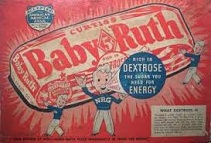
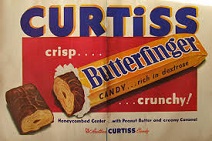

In 1921 the Baby Ruth candy bar is introduced by the Curtiss Candy Co. (founded 1916) of Chicago, Ill., owned by Otto Y. Schnering (1891-1953), allegedly not named for famous baseball player Babe Ruth but for Pres. Grover Cleveland's daughter Ruth Cleveland (which doesn't stop the shine from making them more sales?); in 1923 Curtiss introduces the Butterfinger crisp crunchy chocolate-carmel-coated peanut butter candy bar; in 1964 Curtiss is acquired by Standard Brands, which in 1990 is acquired by Nestle.

In 1921 Doumak Inc. is founded in Los Angeles, Calif. by Alex Doumak to make marshmallows, starting out with a cast mold process then patenting an extrusion process in 1954, allowing mass production; in 1961 they move to Elk Grove Village, Ill.
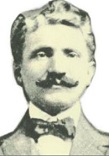
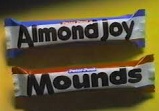
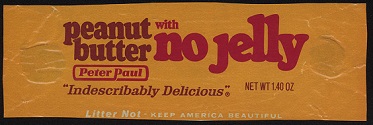
In 1921 after the success of their Konabar (chocolate-covered coconuts, nuts, and fruit), Peter Paul Candy Manufacturing Co., of New Haven, Conn., founded in 1919 by six Armenian immigrants led by Peter Paul Halajian (1864-1927) begins marketing the 5-cent dark chocolate-coconut Mounds candy bar, bucking the Great Depression by doubling the size for the same price in 1934, introducing the Dreams bar in 1934, diced almonds and coconut covered with dark chcolate, and splitting the stock 2-for-1 in Feb. 1935 after increasing workers' wages up to 20%; during WWII despite sugar and coconut shortages the Mounds bar becomes a hit with the U.S. military, which purchases 80% of the production (5M bars/month) by 1944; in 1948 they introduce the milk chocolate-coconut Almond Joy candy bar, which is packaged in blue to compliment the red-packaged Mounds, becoming the first candy manufacturer to use full-color TV commercials, which feature the Peter Paul Pixies singing that Mounds and Almond Joys are "Indescribably Delicious" after Leon Weiss of Gary, Ind. coins it in 1955 for a contest, winning $10; in July 1972 Peter Paul acquires New York Cone Co., maker of York Peppermint Patties; in 1972 they introduce the 15-cent Peanut Butter with No Jelly Bar, which is discontinued in 1979 after several name and price changes; in 1978 they are acquired for $58M by Cadbury Schweppes, whose U.S. chocolate business is purchased in 1988 for $300M by Hershey Co.; in the 1970s the advertising jingle is: "Something you feel like a nut, sometimes you dont/ Almond Joy's got nuts/ Mounds don't", composed by Leon Carr.
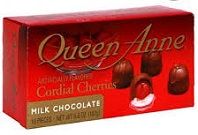
In 1921 Queen Anne Candy Co. is founded in South Side, Chicago, Ill. by Herman Glickman, Henry Martin, and Max Weiss; in 1948 they introduce Queen Anne Cordial Cherries; in 2006 it is acquired by World's Finest Chocolate Co.
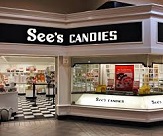
In 1921 See's Candies is founded by Canadian immigrant Charles Alexander See II (1884-1949), his wife Florence MacLean Wilson See (1885-1956), and his widowed mother Mary Wiseman See (1854-1939) in Los Angeles, Calif.; in 1936 they expand to San Francisco, Calif.; on May 1, 1941 they open their first white "all porceelain" store in Bakersfield, Calif.; in 1972 they are acquired by Berkshire Hathaway.
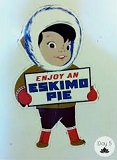
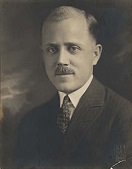
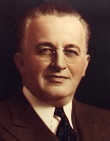
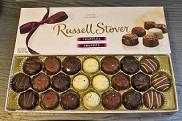

On Jan. 24, 1922 after inventing the idea in 1919 and launching sales last year, Danish-born Onawa, Iowa chemist Christian Kent Nelson (1893-1992) receives a patent for "I-Scream Bars", with a special chocolate shell that hardens in the cold and retains the ice cream inside, going into business with Alton, Kan.-born chocolate manufacturer Russell William Stover (1888-1954), who trademarks the name Eskimo Pie, a chocolate-dipped ice cream bar, which becomes a big hit until copycats nearly put them out of business in 1924, after which Stover and his wife Clara sell-out for $25K and move to Denver, Colo. in 1925, marketing chocolates under the name Russell Stover Candies (originally Mrs. Stover's Bungalow Candies), selling-out to box maker Louis Ward in 1969, who sells it to Lindt of Switzerland on July 14, 2014; meanwhile Nelson sells-out to U.S. Foil Co. (later Reynolds Metal Co.), rejoining in 1935 and inventing new manufacturing and shipping methods until his retirement in 1992, when Eskimo Pie Corp. is acquired by Nestle, followed in 2000 by CoolBrands Internat. of Markham, Ont., Canada; meanwhile in Jan. 1922 after hearing about the Eskimo Pie and sending 12 ice cream trucks out in 1920 selling his own version door-to-door under the name Good Humor Ice Cream Suckers, Harry B. Burt (1875-1926) of Youngstown, Ohio applies for a patent for the Good Humor Bar chocolate-coated ice cream on a stick, receiving it in Oct. 1923, and operating trucks until the 1970s; meanwhile in 1925 he files a patent violation lawsuit against Popsicle Corp., which is settled out of court.


On Oct. 29, 1923 Norman Taurog's Runnin' Wild debuts on Broadway (until June 28, 1924), a comedy based on the 1922 A.H. Gibbs jazz song Runnin' Wild starring Lige Conley as Hector, and Lillian Hackett, launching the Charleston dance craze in the U.S., which peaks in 1926-7 after the 1925 release of The Charleston by James Price "Jimmy" Johnson (1894-1955), which becomes the Roaring Twenties theme song; in 1925 the Charleston Chew chocolate-coated flavored nougat candy bar is introduced by the Fox-Cross Candy Co., founded by Shakespearean actor Donley Cross and Charlie Fox.

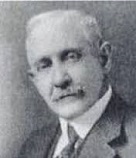
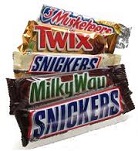
In 1923 Forrest Edward Mars Sr. (1904-99), son of Franklin Clarence "Frank C." Mars (1883-1934) of Minneapolis, Minn., who has been a mediocrity at candy making since 1911 invents the Milky Way brand candy bar, using Hershey's milk chocolate, which becomes the #1 candy bar in the U.S.; in 1929 they move to Chicago, Ill., creating the Snickers bar in 1930, the Mars bar in 1932, the 3 Musketeers bar in 1932, M&M's in 1941, and Twix in 1967; in 1931 Frank C. Mars builds 2.8K-acre Milky Way Farm in Giles County, Tenn., where he lives for life in chocolate heaven; Mars Inc. grows to $33B yearly sales by 2015 while becoming known for co. secrecy.
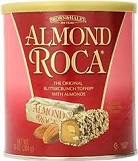
In 1923 Almond Roca (Sp. "roca" = rock) chocolate-covered almond butter crunch hard toffee coated with ground almonds is invented by Harry Brown and J.C. Haley, 1914 founders of Brown & Haley Co. in Tacoma, Wash.; in 1927 they introduce trademark pink tin can containers, with each piece wrapped in gold-colored aluminum foil; a small portion of the original 1923 batch of toffee is carried over to each new batch.

In 1924 Bit-O-Honey honey-flavored taffy candy with almond bits is introduced by Schutter-Johnson Co. of Chicago, Ill.; in 1969 it merges with Ward Candy Co. of New York City, which is acquired by Nestle Co. in 1984, who in May 2013 sells it to Pearson's Candy Co. of St. Paul, Minn.

In 1924 Dum Dums brand sphere-shaped lollipops are invented by I.C. Bahr of the Akron Candy Co. in Bellevue, Ohio, which is later acquired by Spangler Candy Co.

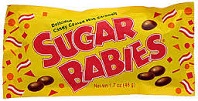


In 1925 Sugar Daddy (Papa Sucker until 1932) hard caramel lollipops are introduced by Chowan County, N.C.-born chocolate salesman Robert Henry Winborne Welch Jr. (1899-1985) of the James O. Welch Co. of Cambridge, Mass., founded by his brother James O. Welch (1906-85); in 1935 they introduce soft Sugar Babies; in 1949 they introduce Junior Mints; 1958 Robert Welch co-founds the rightist John Birch Society, whose views his bro' James publicly disavows in 1961; in 1963 it is acquired by Nat. Biscuit Co. - everybody is a sucker to him?
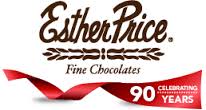
In 1926 Esther Price Candies is founded in Dayton, Ohio, going on to expand production to 1M boxes a year, with 87 stores in five states.

In 1926 Milk Duds brand chocolate candy is introduced by Sean le Noble of the F. Hoffman Co. of Chicago, Ill., who sells it to Holloway Co.; they are called duds because they never come out perfectly round; in 1960 it is acquired by Beatrice Foods, which sells it in 1986 to Leaf Candy Co., which in 1996 is acquired by the Hershey Co.
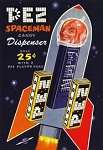
In 1927 Austrian candy exec Eduard Haas III (1897-1989) invents Pez (PEZ) (from the German word Pfefferminz), based on peppermint oil, and begins marketing them as a way to stop smoking; in 1953 he begins exporting them to the U.S., finding that children prefer them to adults, causing him to begin putting cartoon heads on the dispensers in 1955 and introduce fruit flavors - really a good way to cover up one's breath later?

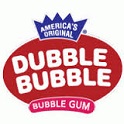
In Aug. 1928 accountant Walter E. Diemer (1904-98) of the Frank H. Fleer Chewing Gum Co. of Philly (founded 1885) (makers of Blibber-Blubber brand bubble gum) accidentally invents superior pink-colored Dubble Bubble brand bubble gum, selling $1.5M the first year; too bad, they fail to Bill Gates, er, patent it.


On Nov. 15, 1928 Reese's Peanut Butter Cups are introduced by Harry Burnett "H.B." Reese (1879-1956) of Hershey, Penn, former shipping foreman for Milton S. Hershey, using guess what kind of chocolate, working out of his basement; on July 2, 1963 his six sons merge the H.B. Reese Candy Co. with the Hershey Chocolate Corp; in 1977 they introduce Reese's Pieces peanut butter candy, which after M&M's turns it down is featured in the 1982 film "E.T. the Extra-Terrestial", causing sales to boom - biggest marketing mistake in candy history?

In 1928 the Heath Bar (originally Heath English Toffee) chocolate-coated toffee bar is introduced by ice cream maker L.S. Heath (1871-1958) of Robinson, Ill. and his sons Bayard and Everett, selling it on their dairy trucks, with the slogan "Heath for better health", claiming it contains "pure sugar cane"; in 1942 the U.S. Army places its first order for $175K for use in rations, causing production to be expanded; in the 1970s it buys-out Fenn Bros. of S.D., makers of Butter Brickle; in 1989 it is acquired by the Leaf Candy Co., which is acquired in 1996 by the Hershey Co.
In the 1930s jelly beans become part of U.S. Easter celebrations because they resemble eggs; for the same reason they are manufactured in spring colors and hardly incl. any black (licorice).
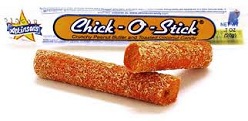
In 1932 Atkinson Candy Co. in Lufkin, Tex. is founded by B.E. Atkinson Sr. and his wife Mabel C. Atkinson, going on to make Chick-O-Stick in the 1950s, along with Coconut Long Boys, Peanut Butter Bars, Mint Twists, Peanut Brittle et al.; in 2013 it acquires Slo Poke, Black Cow, and Sophie Mae candies from the Warrell Corp. of Camp Hill, Penn.
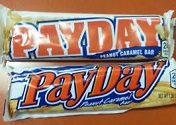
In 1932 Frank Martoccio of the Hollywood Candy Co. introduces the PayDay candy bar, consisting of salted peanuts rolled in caramel surrounding a firm nougat center; in 1967 it is acquired by Consolidated Foods, which merges with Sara Lee, and is acquired in 1988 by the Leaf Candy Co., which is acquired in 1996 by the Hershey Co.
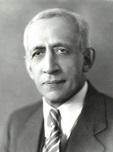
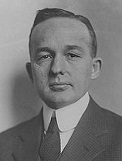
On May 9, 1934 after the U.S. sugar industry only supplies one-third of the 6M tons/year of U.S. sugar consumption, the U.S. Jones-Costigan Sugar Act is passed, sponsored by U.S. Sen. (D-Colo.) (1931-7) Edward Prentiss Costigan (1974-1939) and U.S. Rep. (D-Tex.) (1917-40) John Marvin Jones (1882-1976), extending the Agricultural Adjustment Act to classify sugar beets and sugar cane as a basic commodity, and protect U.S. sugar producers by imposing quotas on imports except for Cuba, while eliminating child labor and insuring workers fair wages; in 1935 the subsidy for growers paid for by taxes on processors is ruled unconstitutional, causing an amended act to be passed in 1937; the U.S. sugar biz becomes a racket, "a government-created cartel that goes well beyond the controls imposed in any other sector of American private enterprise."
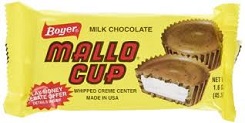
In 1936 Boyer Brothers Inc. is founded in Altoona, Penn. by brothers Bill and Bob Boyer to manufacture chocolates, introducing the Mallo Cup in the 1940s; in ? it is acquired by Am. Maize Products, which in June 1984 sells out to Consolidated Brands.
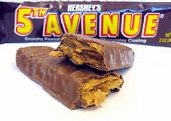
In 1936 the peanut butter and chocolate 5th Avenue Bar is introduced by Luden's of cough drop fame; in 1986 it is acquired by Hershey Co.
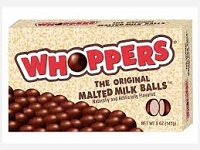
In 1939 Overland Candy Co. introduces Whoppers malted milk balls; in 1947 it merges with Chicago Biscuit Co., Leaf Confectionary, and Leaf Machinery to form Leaf Brands, which introduces the cardboard milk carton box, with a special egg-shaped candy sold for Easter; it is acquired by Hershey Co. in 1996; in 2000 Mini Whoppers are introduced; in 2006 strawberry milkshake flavor is introduced, along with Reese's Peanut Butter Cups flavor.
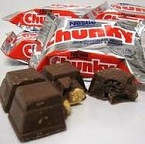
In 1939 Philip Silvershein of New York City introduces the 5-cent. Chunky milk chocolate candy bar with roasted peanuts (originally cashews and Brazil nuts) and raisins, distributed by his friend William Wrigley Jr.; in 1984 it is acquired by Nestle; "Open wide for Chunky".
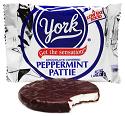
In 1940 York Peppermint Patties are introduced by Henry C. Kessler of the York Cone Co. of York, Penn., which markets in the NE U.S.; in 1972 it is acquired by Peter Paul, which markets it nationally in 1975; in 1978 Peter Paul merges with Cadbury, which is acquired in 1988 by Hershey Co.; since the 1970s the slogan is "Get the sensation".

In 1942 Pixy Stix (originally Lik-M-Aid) sweet-sour citric powder is invented by J. Fish Smith of Sunline Inc. of St. Louis, Mo., based on the 1-cent Fruzola Jr. drink mix sold by Fruzola Co. of Salt Lake City, Utah., selling the powder in packages, followed in 1959 by color-striped straws; in 1962 they introduce SweeTarts candy tablets, followed in 1965 by Spree; in 1975 after becoming the Sunmark Co. it acquires the Quaker Co.'s Willy Wonka brand and founds the Willy Wonka Candy Co., becoming the Sunmark Co.; in 1986 it is acquired by Rowntee Mackintosh of the U.K., which in 1988 is acquired by Nestle.
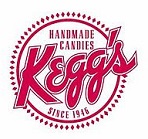
In 1946 Kegg's Candies is founded in Houston, Tex. by Robert Kegg to make handmade chocolates, becoming legendary in Tex.

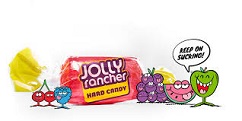
In 1949 Jolly Rancher Co. is founded in Golden, Colo. by St. Paul, Minn.-born Bill Harmsen (1912-2006) to sell hard candy, ice cream, and chocolate at seveal stores in the Denver Metro area; original candy flavors incl. grape, apple, watermelon, and Fire Stix; in 1966 it is acquired by Beatrice Foods, followed in 1983 by Leaf Brands, which in 1996 is acquired by Hershey Co.; in 2002 the Wheat Ridge, Colo. plant is moved out of the state.
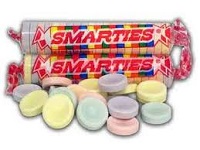
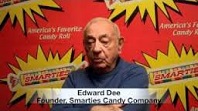
In 1949 Smarty Candy Co. (originally Ce De Candy Inc. until 2011) is founded in Bloomfield, N.J. by Edward "Eddie" Dee (1924-) to manufacture Smarties wrapped candy pellets; in 1959 they move to Elizabeth, N.J., and in 1967 to Union, N.J.

In the 1950s the Big Hunk honey-sweetened nougat bar with roasted peanut bits is introduced by Golden Nugget Candy Co.; in 1970 it is acquired by the Annabelle Candy Co., founded in 1950 in San Francisco, Calif. by Russian immigrant Sam Altshuler and named after his daughter, moving to Hayward, Calif. in 1965.
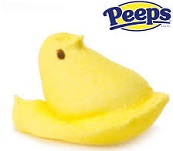

In 1953 Peeps brand marshmallow Easter candy begins to be marketed by Russian Jewish immigrant Sam Born (1891-1959) (who was awarded the key to San Francisco, Calif. in 1916 for inventing a machine that inserted sticks into lollipops) in Bethlehem, Penn., whose co. (founded in 1923 in New York City) is called Just Born to indicate freshness not a Jesus freak ("A great candy isn't made... it's Just Born"), although that doesn't hurt sales in Christian Am.? - no coincidence that TLW was just born this year?
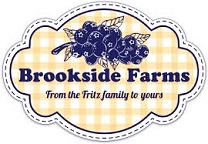
In 1954 Brookside Farms is founded in the Fraser Valley of British Columbia by the Fritz family to manufacture chocolates with soft sweetened fruit flavored centers, incl. acai, goji, and pomegranate; in 2011 it is acquired by Hershey Co.
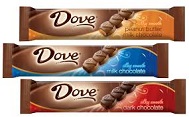
In 1956 Dove brand ice cream bars are introduced by Greek-born Leo Stefanos in South Side, Chicago, Ill., who launches the Galaxy brand in Britain in 1960, and goes nat. in the U.S. in 1985; in 1986 Mars Inc. acquires the co., offering candy bars which feature wisdom messages printed inside the foil wrappers, e.g., "Temptation is fun... giving in is even better".
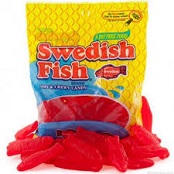
In the late 1950s Swedish Fish fish-shaped chewy wine gum candy is introduced in the U.S. by Malaco of Sweden; the slogan is "A friend you can eat".
On Oct. 14, 1960 (Shoe Day Plus Two) after the U.S. stops its sugar quota, Cuba nationalizes its banks, sugar industry, and all large commercial and industrial enterprises, causing the U.S. to respond on Oct. 19 with an embargo on Cuba covering all commodities except medical supplies and certain food products (until 2016); Ike sends a note to the Org. of Am. States (OAS) on Oct. 28 charging that Cuba has been receiving substantial arms shipments from the Soviet bloc; too bad, the sugar embargo allows Cuban expatriates led by the Fanjul Brothers to set up shop in Fla. S of Lake Okechobee, depleting the Everglades while setting up a federally-subidized system of sugar price supports greased by baksheesh that continues until ?.
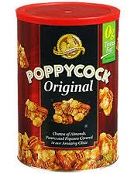
In 1960 Poppycock brand popcorn clusters with almonds and pecans, covered in a candy glaze, invented in the 1950s by Howard Vair is acquired by Wander Co. of Switzerland (makers of Ovaltine), who produce it in Villa Park, Ill., later moving production to Lincoln, Neb. under the name Lincoln Snacks Co.; in 1968 it merges with Sandoz Nutrition Co. to form Sandoz-Wander Inc.; on Sept. 7, 2007 it is acquired by Conagra Foods.

In 1960 Starbust (originally Opal Fruits) box-shaped fruit-flavored soft taffy candies are introduced by Mars in the U.K.; Peter Pfeffer picks the name Opal Fruits for a competition, winning Ł5; the original flavors are lemon, lime, orange, and strawberry, with the slogan "Made to make your mouth water"; they are introduced in the U.S. in 1967 as Starburst.
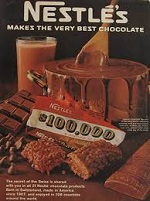
In 1966 Nestle's 100 Grand ($100,000) Bar, consisting of chocolate, carmel and crisped rice is introduced, named after a TV game show.

In 1966 Crunch 'n Munch caramel-coated popcorn with peanuts is introduced by the Franklin Nut Co.; in 1980 it is acquired by Am. Home Foods, which is renamed Internat. Home Foods in 1996; in 2006 it is acquired by ConAgra; in 2004 the New York Yankees switch from Cracker Jack to it, only to switch back after a public outcry.

In 1966 Pocky chocolate-covered biscuit sticks are introduced by Ezaki Gilco of Japan; in 1971 almond coatings are introduced, followed in 1977 by strawbery coatings; they are usually served with a glass of ice water; in 1983 Pepero cookie sticks are introduced by Lotte Confectionary of South Korea, pissing-off Pocky, who sues.

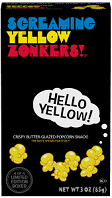
In 1967 Fiddle Faddle brand caramel or butter toffee-coated popcorn with peanuts is introduced by Lincoln Snacks; in 1968 they introduce Screaming Yellow Zonkers, yellow sugary glazed popcorn sans peanuts, sold in a black box with humorous "crazy copy" and illustrations on every panel, becoming the first food item to be packaged in black; in 2007 they are acquired by ConAgra Foods.
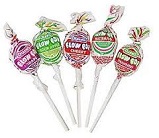
In 1969 Charms Blow Pops (originally Triple Treat until 1973) bubble gum center lollipops are invented by Thomas Tate Tidwell of the Triple T Candy Co. of Atlanta, Ga., who receives a patent in Nov. 1969; in 1973 they are acquired by the Charms Co. of Freehold, N.J. (founded 1912), and manufactured in Covington, Tenn.; in 1988 they are acquired by the Tootsie Roll Co.
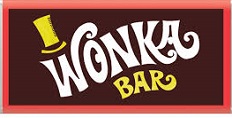
In 1971 the Wonka Bar is announced by Breaker Connections of Chicago, Ill. (owned by Quaker Oats Co.) to exploit Mel Stuart's film Willy Wonka & the Chocolate Factory (June 30), based on the 1964 novel "Charlie and the Chocolate Factory" by Roald Dahl, which is financed by Quaker Oats Co.; too bad, the bars have poor shelf life and taste bad, causing them to be be quickly withdrawn prior to the film's release; in 1975 Breaker Connections is acquired by Sunmark Corp., becoming Willy Wonka Brands in 1980; in 1986 Sunmark is acquired by Rowntee Mackintosh of the U.K., which in 1988 is acquired by Nestle, which in 1993 renames that div. the Willy Wonka Candy Co.; the 100+ product line incl. SweeTarts (1962), Everlasting Gobstoppers (1976), Laffy Taffy, (SweeTarts) Shockers, Bottle Caps, Fun Dip (originally Lik-M-Aid), Spree (1965), Runts (1982), Mixups, Nerds (1983), Gummies (2009), Kazoozles (2009), and Pixy Stix; Wonka Bars are discontinued in Jan. 2010.

In 1974 Skittles brand fruit-flavored sweets are introduced by a British co., and imported to the U.S. in 1979 by Mars Inc.; in 1982 U.S. production begins; the slogan is "Taste the rainbow" (1994).
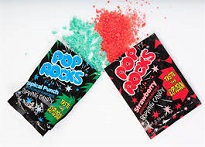
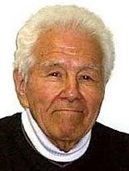
In 1975 Gen. Foods begins marketing Pop Rocks, carbonated candy ("Popping Candy"), patented on Dec. 12, 1961 (#3,012,893) by chemist William A. "Bill" Mitchell (1911-2004) (inventor of Tang, Cool Whip, quick-set Jell-O, powdered egg whites, etc.), which becomes a favorite aid for cunnilingus (bad idea); too bad, a false rumor that "Mikey" died after mixing it with soda pop (making his stomach explode) causes sales to sag, and it is withdrawn in 1983-5 after it proves to have a short shelf life.

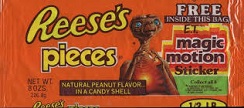
In 1978 peanut-flavored Reese's Pieces are introduced by Hershey Co. On May 26, 1982 Steven Spielberg's E.T.: The Extra-Terrestrial (Universal Pictures) debuts, written by Melissa Mathison, taking the fright out of aliens from outer space (and, by Hollyweird logic, illegal aliens coming into the U.S.?), making a star of cute young babe Drew Barrymore (Gertie), along with Dee Wallace (Mary), Henry Thomas (Elliott), and Peter Coyote (NASA man "Keys"); the short cute lovable alien male E.T. is made of brown Play-Do and chicken wire; his voice is produced by elderly Marin County, Calif. heavy smoker Pat Welsh along with Spielberg's sleeping wife with a cold, Debra Winger et al.,; his face is a composite of Carl Sandburg, Ernest Hemingway, and Albert Einstein, and looks like a giant penis, the kind both girls and boys like to kiss?; physicians from the USC Medical Center play the doctors who try to save E.T. after govt. agents take over Elliot's house; a scene starring Harrison Ford as Elliott's elementary school principal is cut; after Mars rejects an offer to use M&Ms, Hershey's Reese's Pieces (introduced 198) are used, causing sales to zoom by 300%; does $792.9M box office on a $10.5M budget.

In the late 1970s Sour Patch Kids (originally Sour Group Kids until 1985, named after the Cabbage Patch Kids) sour-to-sweet candies, with the slogan "Sour. Sweet. Gone", invented by Frank Galatolie of Jaret Internat. are acquired by Mondelez Internat. and Malaco Licorice Co. of Sweden, who form the M&A Candy Co. in Hamilton, Ont., Canada to manufacture them; they are briefly called Mars Men.
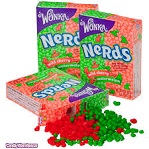
In 1983 Nerds sour candy is invented by Angelo Fraggos, and awarded Candy of the Year by the Nat. Candy Wholesalers Assoc. (NCWA); it is later acquired by Willy Wonka Candy Co.
On May 10, 1984 the Monster with 21 Faces sends its first letter to the giant Ezaki Gilco food co. after the kidnapping and escape of pres. Katsuhisa Ezaki, claiming that it has poisoned the co.'s confections with potassium cyanide, causing them to remove them from stores, losing $21M and laying off 450 part-time workers; the next target is the Morinaga confectionary co., followed by Marudai Ham and House Food Corp.; on June 26 Marudai Ham pays 50M yen to stop the harassment, after which on June 28 the Fox-Eyed Man is spotted and trailed, but eludes capture; after failing to catch the mastermind, Shiga Prefecture police chief ? Yamamoto commits suicide by self-immolation in Aug. 7, 1985; he is not caught until ?.

In 1995 Chocolove brand natural organic chocolate bar co. is founded in Boulder, Colo. by Timothy Moley, becoming the first to pub. the cocoa content percentage on its wrappers, starting a trend.
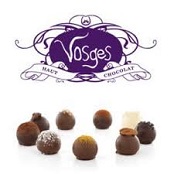
In 1998 Vosges Haut-Chocolat is founded in Chicago, Ill. by Katrina Markoff, producing globally-inspired chocolates combined with exotic spices, bacon, etc., starting a trend; she also founds Wild Ophelia to produce natural non-GMO Americana chocolates.
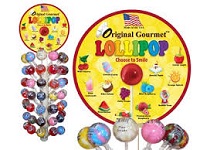
In 2000 Original Gourmet Food Co. in Salem, N.H. is founded to manufacture gourmet lollipops.
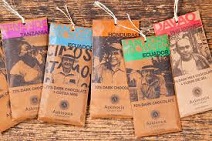
In 2007 Askinosie Chocolate is founded in Springfield, Mi. by defense atty. Shawn Askinosie to make chocolate bars from 100% traceable single-origin cocoa beans from four regions: San Jose Del Tambo, Ecuador; Davao, Philippines; Cortes, Honduras; and Tenende, Tanzania.
In 2012 Mondelez Internat. ("world" + "delicious") is spun-off by Kraft Foods to market crackers (Triscuit), cookies (Oreo, Chips Ahoy!), chocolate (Cadbury), and gum and candy (Chiclets, Dentyne, Trident, Cadbury, Toblerone), with HQ in Deerfield, Ill.